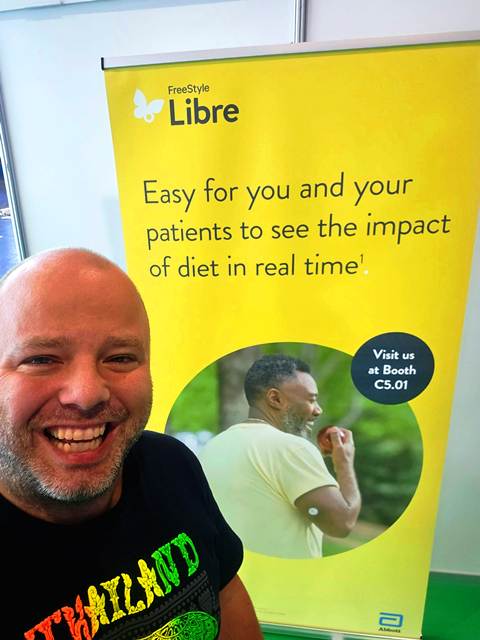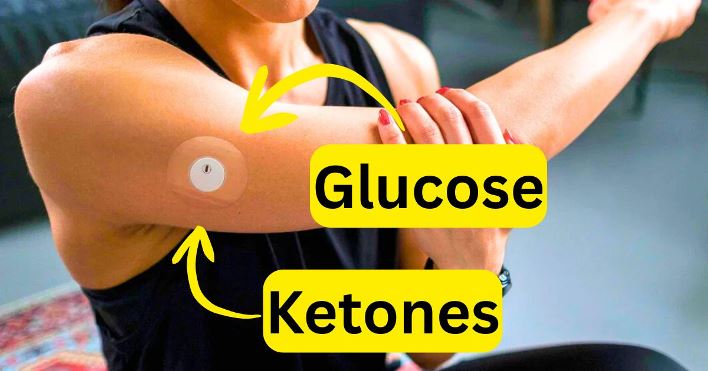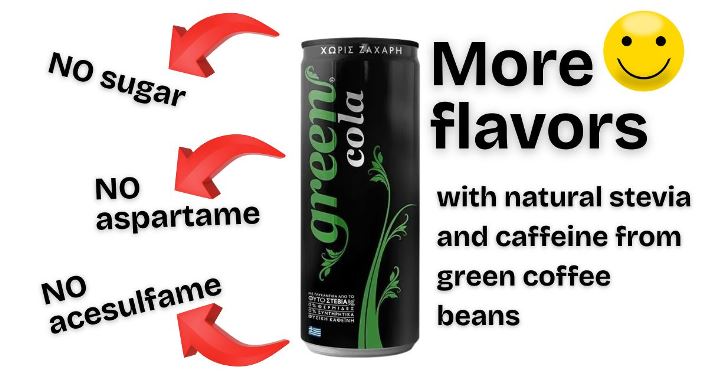Anyone who cares about themselves and their diabetes should know what the market leader in continuous glucose monitoring is up to.
As we know, FreeStyle Libre 2 is a new and modern sensor that made its global debut just a year ago. This sensor boasts an improved Bluetooth chip for stronger mobile connectivity, an extended wear time of 15 days, and a cutting-edge algorithm offering excellent accuracy (MARD of only 8.2%).
A new sensor that also measures ketones!
To maintain its leadership in the global sensor market, Abbott must constantly innovate and enhance its products. That’s why they’ve made major progress in developing a new generation of sensors that will continuously measure both glucose and ketones.
The lecture on ketones was held on the final day of the Vienna conference, when most delegates were already heading home. However, that didn’t affect Abbott’s session at all — quite the opposite — it was packed! 🙂

Abbott’s presentation on continuous ketone monitoring using sensors
Why is continuous ketone monitoring important?
Ketones are byproducts of fat breakdown produced when the body lacks sufficient insulin. A sudden rise in ketones can lead to a dangerous condition known as diabetic ketoacidosis (DKA).
In Croatia, adult people with diabetes are generally poorly educated about their condition. Fortunately, this doesn’t apply to parents of children with diabetes — they are usually much more informed and understand just how important ketones are.
Ketones and early detection of danger
Elevated ketone levels are the first sign of developing diabetic ketoacidosis (DKA), a serious condition that can quickly become life-threatening. Simultaneous monitoring of glucose and ketones enables early warning and faster response, which further reduces the risk of complications and the need for emergency intervention.

The symptoms of diabetic ketoacidosis are almost identical to those of hyperglycemia.
Real-time ketone information allows you to know exactly when it’s safe to stay home with high blood sugar — and when it’s time to seek emergency help. When ketones are slightly elevated, treatment involves insulin, hydration, and electrolytes. When they cross the critical threshold — there’s no doubt — head to the hospital or call emergency services!
Less finger-pricking, more convenience
Currently, ketones are measured using blood or urine test strips, which require extra time and sometimes uncomfortable finger pricks. A sensor that provides real-time ketone and glucose data offers simpler and pain-free management.
This is especially important during acute illness when glucose levels may appear normal while ketones are elevated.

Abbott stood out at the EASD conference by distributing apples and drawing attention to its sensor that measures glucose every single minute!
Special importance for insulin pump users
For those using insulin pumps, the dual-function sensor is even more valuable. In cases of catheter blockages or interrupted insulin delivery, ketones rise faster than in people using standard insulin injections. A sensor that tracks ketones enables early detection of this rise and reduces the risk of developing ketoacidosis.
Some insulin pump manufacturers have already officially announced plans to integrate their systems with Libre sensors capable of measuring both glucose and ketones.
Conclusion
Abbott’s upcoming sensors, which combine glucose and ketone monitoring in a single device, bring a new level of safety and convenience to the lives of people with diabetes on conventional insulin therapy. Moreover, collaborations with pump manufacturers pave the way toward systems that are even closer to an artificial pancreas! 🙂
Wish us luck!
Sensor housing, FreeStyle, Libre, and related trademarks are trademarks of Abbott.
©2025 Abbott.






